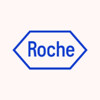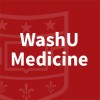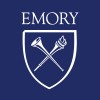
Health Care Coach Support in Reducing Acute Care Use and Cost in Patients With Cancer
Acute Myeloid LeukemiaBrain Glioblastoma65 moreThis randomized pilot clinical trial studies health care coach support in reducing acute care use and cost in patients with cancer. Health care coach support may help cancer patients to make decisions about their care that matches what is important to them with symptom management.

A European Registry Study to Prospectively Observe Treatment Patterns and Outcomes in Participants...
Breast CancerThis disease registry is a prospective, multicenter non-interventional study designed to observe anti-cancer treatment regimens and clinical outcomes in participants with HER2-positive unresectable LA/mBC. Diagnosis of unresectable LA or mBC can be up to 6 months old prior to registry enrollment.

Neoadjuvant Study of Palbociclib in Combination With Letrozole and Trastuzumab in Stage II-III ER+...
Breast CancerCancer of Breast1 moreThe investigators propose to influence estrogen receptor (ER) signaling by combining endocrine therapy with CDK4/6 inhibition along with trastuzumab in ER+/ human epidermal growth factor receptor 2 (HER2)+ early stage breast cancer.

Immunostimulating Interstitial Laser Thermotherapy in Breast Cancer
Breast NeoplasmsThermotherapy is a technology aiming at destroying tissue, for example tumor tissue. Immunostimulating Interstitial Laser Thermotherapy (imILT) is a specific form of thermotherapy, which, in addition to destroying tumor tissue, has been optimized to cause a tumor specific immunologic response. In laboratory animals the imILT method has also been shown to induce a so called abscopal effect. This means that when one tumor is treated with imILT other, untreated, tumors also decrease in size. The immunologic response has previously been characterized in breast cancer patients after receiving imILT treatment , and presumed abscopal effects induced by imILT have also been described in a malignant melanoma patient. The purpose of this trial is to investigate the functionality and safety of the imILT treatment method in patients diagnosed with breast cancer. The treatment method has successfully been used for treatment of patients with breast cancer and malignant melanoma. Treatment of breast cancer patients caused an increase of cytotoxic T lymphocytes in the treated tumor, as well as activated dendritic cells at the tumor border. Regulatory T lymphocytes decreased in the regional lymph nodes. This trial is explorative, prospective, open and non-randomized. Five breast cancer patients will be treated in this trial, which is estimated to be carried out during a time period of 9 months.

Preservation of Fertility by Ovarian Stimulation Associated With Tamoxifen, Prior Chemotherapy for...
Breast CancerThe rates of patients with spontaneous pregnancies reported after breast cancer is between 3 and 7%, particularly because of these treatments. Therefore, it is essential to anticipate this problem by proposing the use of fertility preservation techniques for these young patients prior to any gonadotoxic treatment. PRESAGE study offers to patients fewer than 40, to preserve their fertility before neoadjuvant or adjuvant chemotherapy for invasive breast cancer. The aim of this study is to evaluate the feasibility of ovarian stimulation emergency order not to delay the start of treatment. This stimulation combined gonadotropin and tamoxifen followed by an oocyte retrieval. The patient may receive an oocyte vitrification and / or embryonic. This procedure is already done in many countries, and by some French teams, by combining tamoxifen or letrozole to the classic gonadotropin stimulation.

Hong Kong Breast Cancer Study
Breast CancerDuctal Carcinoma In SituIntroduction: With population ageing and increasing Westernization breast cancer continues to be important health conditions among women in Hong Kong. Greater collaborative research efforts are needed to examine the questions about population screening for breast cancer, the aetiology of such lesions and outcomes of breast cancer during survivorship period. There is a lack of locally-relevant models for assessing breast cancer risk. Contribution of novel genetic factors to breast cancer, identification of the key and functional alleles in gene regions associated with risk of breast cancer as well as gene-environment interaction, requires further investigation in Chinese population. Prognostic research studies in the West may not be readily applicable to the Chinese population. Objectives: We aim to investigate the aetiology and outcomes of breast cancer in local Chinese by using case-control and cohort study design in the health care setting in Hong Kong. We aim to examine potential risk factors/biomarkers (both traditional and novel), and to build infrastructure and biobank for breast cancer surveillance. We will follow up cases prospectively as a survivor cohort. Methods: A hospital-based case-control study and a prospective survivor cohort study will be conducted. Consecutive incident breast cancer and DCIS cases (n=3,501) within a 36-month period in Hong Kong were recruited from public hospitals, private hospitals and private practices; and controls were selected by frequency-matching on factors such as age and hospital/clinic setting, whenever possible. Cases will be prospectively followed up over a 10-year period, and data collection will occur at baseline (within 24 weeks of diagnosis), 3, 5 and 10 years following baseline assessment. Biologic samples (including both blood, and tumour and normal breast tissue samples from the cases, and blood samples from the controls) will be collected for later genetic and molecular study including WGS, GWAS, gene-environment interaction and molecular functional studies. Depending on availability of pathology samples and resources, additional studies such as tissue microarray block production will be considered and performed in future. Data will be analysed by traditional regression, EWAS and genetic association methods, whenever relevant. Public Health Implications: The repository of clinical, radiological and biological materials assembled through this case-control study will serve as a common, publicly accessible platform for subsequent functional analysis and scientific interrogation. The case-control findings would offer an improved understanding to the state of the science on aetiology of breast cancer in Chinese women. In the genomics analysis, potential refined classification of breast tumours may enhance our understanding, detection and follow-up of such lesions, as well as enable us to have more informed targeted and personalized treatment selection for our women population. The cohort study findings are important for developing an effective strategy for the improvement of overall survival and quality of life for the cancer survivors in Chinese population.

Ipilimumab and Nivolumab in Treating Patients With Recurrent Stage IV HER2 Negative Inflammatory...
HER2/Neu NegativeRecurrent Inflammatory Breast Carcinoma2 moreThe purpose of this research study is to look at the efficacy (the effect on tumor) and the safety (the effect on body) of the study drugs when given as a combination in patients with metastatic recurrent epidermal growth factor receptor 2 (HER2) negative inflammatory breast cancer. This is a phase II study of 2 drugs used in combination: nivolumab and ipilimumab. The combination of these drugs is already approved by the Food and Drug Administration (FDA) to treat advanced melanoma (a type of skin cancer). Nivolumab and ipilimumab are not approved by the FDA for patients with metastatic recurrent HER2 negative inflammatory breast cancer, hence the treatment is considered experimental or investigational.

Prediction of Response to 2nd-line Hormone Therapy by FES CT/PET in Patients With Metastatic Breast...
Metastatic Breast CancerClinicians are currently proposing second-line hormonal treatment to a metastatic patient who is progressing after first-line hormonal therapy if the initial disease was RH + with an increase in survival without recurrence more or less long. The biopsy of the metastatic site or sites is rarely performed because of the heaviness of the gesture. Clinicians are waiting for imaging, which can replace biopsy before the second-line metastatic hormone treatment in breast cancer, which will reveal the metastatic lesion heterogeneity allowing to establish if hormone therapy is the best therapeutic option for these patients and therefore lead to a personalized medicine driven by PET FES. This imaging approach seems all the more interesting as ER expression appears to evolve over time under the pressure of treatment or the natural evolution of carcinomas. Currently, no studies in breast cancer, in an ER + population on the initial tumor and Her2 negative, are listed for the study of ER expression by PET FES before a second metastatic hormone treatment line.

Reaching for Evidence-baSed Chemotherapy Use in Endocrine Sensitive Breast Cancer
Primary Invasive Breast CancerEstrogen Receptor Positive Tumor1 moreSystematic assessment of survival data of patients who have been tested with EndoPredict®; prospective proof that patients with low risk classification by EndoPredict® (EPclin) can safely forgo chemotherapy and be treated with endocrine therapy alone.

Pharmacokinetically Guided Everolimus in Patients With Breast Cancer, Pancreatic Neuroendocrine...
Estrogen Receptor-positive Breast CancerGastrinoma17 moreThis phase II trial studies how well real-time pharmacokinetic therapeutic drug monitoring works in preventing stomatitis from developing in patients with hormone receptor positive breast cancer, pancreatic neuroendocrine tumors, or kidney cancer that are receiving a type of cancer drug called everolimus. Stomatitis is a common side effect of everolimus that causes inflammation of the mouth, with or without oral ulcers, and frequently leads to patients discontinuing the medication. Monitoring the blood levels of everolimus and making adjustments in a patient's dose may be able to decrease the incidence of stomatitis, while maintaining the effectiveness of everolimus to treat the cancer.
